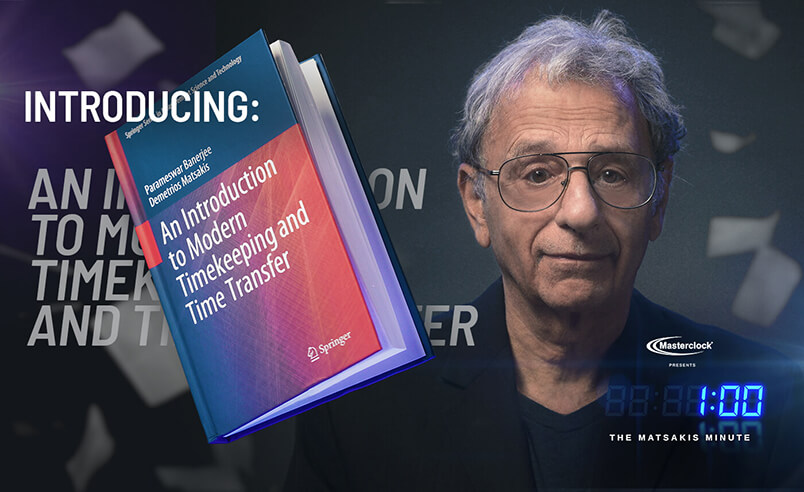Industry Literature - November 30, 2016
From SCADA (supervisory control and data-acquisition) systems to PLCs (programmable-logic controllers), industrial automation includes a vast range of control systems. These systems manage everything from automotive part production to food processing, and they rely on synchronizing several devices at once. Although synchronization and timing are never perfect, steady results are possible with the right equipment. Learn more about synchronization with hardware-based Ethernet protocol solutions.
Synchronizing Industrial Automation Systems Over Ethernet
Network Time Protocol
Also referred to as NTP, Network Time Protocol was developed to sync clocks over a network. It's designed to maintain the sync of remote computer clocks within a few milliseconds. The timing and jitter depend on the network connections and the system components used.
This protocol is great for syncing logs with millisecond timing resolution, and it handles industrial processes that don't need high-resolution clocks or low jitter. It's compatible with every major computer operating system and can operate on a tiered stratum system that includes a high-resolution clock.
IEEE 1588 Precision Time Protocol
Also referred to as PTP, this protocol is a standard for more demanding applications that require higher resolution clocks. It works over a range of networks, but the most common is Ethernet. The protocol has master and slave clocks and may include boundary or transparent clocks.
The IEEE 1588 PTP protocol is more ambition than Network Time Protocol. It factors in distance and processing latencies, making sub-microsecond synchronization possible.
Industrial Automation Protocols
Industrial automation involves more than just timing; device communication is vital. Of the myriad of implementations, Ethernet solutions might offer longer distance, better performance, and more features. Despite this, availability, cost, and reliability are the most important.
Industrial automation protocols have an application-programming interface that's based on the communication protocol for controlling and monitoring devices. Many of them use master and slave clocks, and they can be extended into Ethernet implementations. It's also possible to mix and match protocols in a single environment through gateways between networks.
Industrial Ethernet via Hardware
Although timestamping via software is possible, it's not as accurate as hardware-based systems. Standard Ethernet hardware is capable of handling many industrial applications. Those that use IEEE 1588 protocols can address more demanding applications. They have timestamp units that operate at the Media Access Control level with real-time clocks for accurate timestamping. Ethernet systems based around hardware generally sync at 100 megabits per second, but 1 gigabit per second is possible.
Masterclock NTP and PTP Devices
Masterclock offers three great industrial automation solutions that provide fast synchronization over Ethernet. The GMR1000 and GMR5000 master clocks and the NTP100 time servers all include NTP client and server capabilities. The master clocks also include IEEE 1588 PTP functionality. They all offer time legally traceable to UTC when equipped with a GPS receiver. Learn more about each of these below:
- GMR1000 Master Clock – A compact time server that references several timing sources and has a range of outputs. It offers SSH encryption and MD5 authentication to make communications secure. This server is capable of syncing hundreds of thousands of NTP clients. It can reference GPS, GLONASS, IRIG-B, or maintain its own time with a high-stability oscillator. The holdover stability of the standard TCXO is plus or minus three seconds per year when the timing reference is lost. This can be increased to plus or minus 250 milliseconds per year with the optional OCXO. It can be rack-mounted with an RM4 Rack Mount Kit.
- GMR5000 Master Clock – This 1RU time server can also reference a range of timing sources and provides a variety of outputs, but it offers more configuration options than the compact GMR1000. It also offers SSH encryption and MD5 authentication, and includes a standard TCXO with optional OCXO.
- NTP100 Time Server – This server synchronizes to GPS satellites or an IRIG-B time code source. It converts its timing reference to NTP and distributes packets over Ethernet via NTP query (unicast), multicast, or broadcast modes. It can also maintain time without a reference via an internal oscillator. It is rack-mountable with an RM4 Rack Mount Kit.
These Masterclock network solutions can meet the clock synchronization needs in industrial automation systems. Request a quote to learn more about our precise time servers.
Return to Knowledge Center to learn more.

